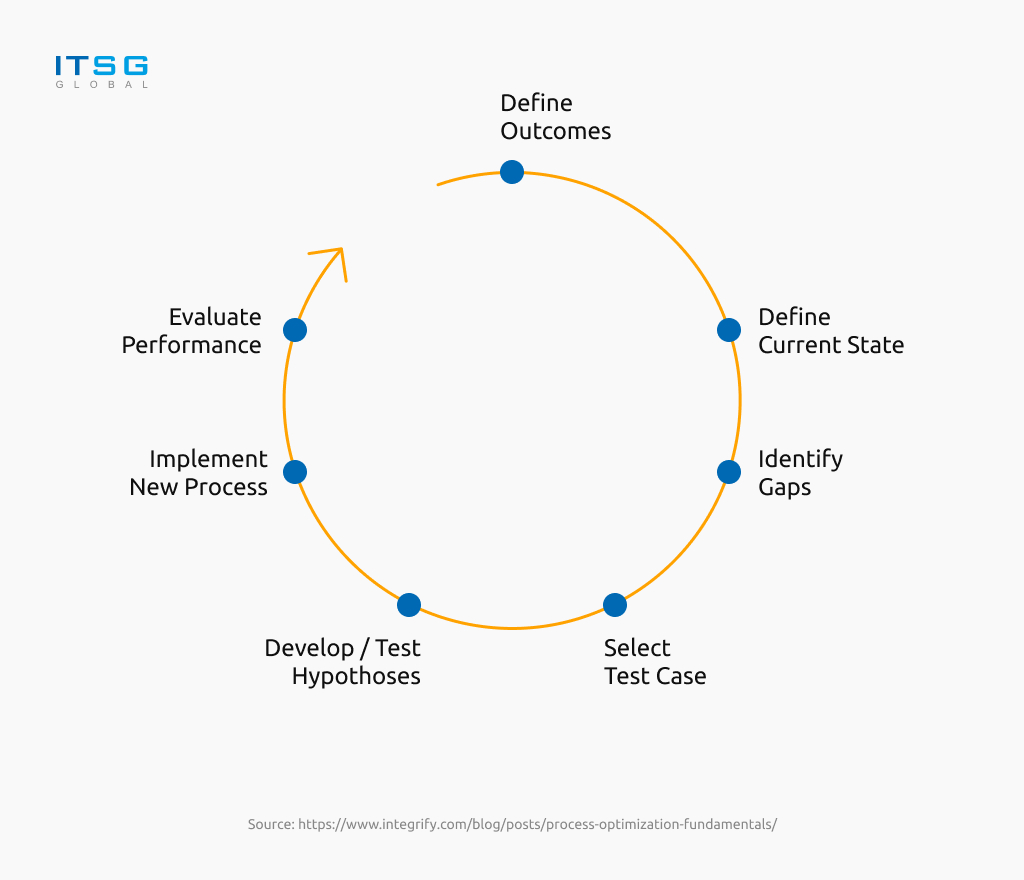19 September 2023

In the modern business environment, organizations and their leaders must stay agile and open to new concepts if interested in keeping pace with their existing and potential competitors. Fortunately, business process optimization is well-known to be a powerful tool that helps to unlock the full potential and simultaneously gain the needed advantage. Product and service innovation is an obvious necessity to remain relevant in the contemporary world. Process optimation is a key factor in obtaining transformative growth because it allows focusing on less repetitive tasks. Modern innovation translates into better and faster delivery of value to customers, which clears the path to new opportunities for any company out there.
To accomplish a successful optimization, it is crucial to have a strategic approach with a deep understanding of what can be applied to a specific organization.

Optimization of processes should be viewed as a redesign of different operations at the same time and with a single goal in mind. While optimizing one process at a time is an option, it doesn’t provide the same benefits as modifying all core processes at once to provide a competitive advantage and profitability for the organization.
The optimization, like any other investment, should be well-planned. An understanding of the strengths and weaknesses of the currently executed processes is a must, as well as having a clear goal for the whole operation.
The circle goes as follows: the process is developed and built. Next, it’s launched and tested by actual users, who can evaluate it and introduce new ideas. Over time, the new process becomes even more optimized and allows us to dig deeper – what other processes can be developed similarly, and what kind of value will be delivered as a result?
What’s important to remember:
- The strategy must be clear and well-understood by all people affected by change. That means that it’s not only the leader and developers who need to understand the benefit of change, but it has to be explained to employees who are going to work on it
- There will be resistance, like with many changes
- All resources must be available – that means also the know-how and actual technical skill to create the new solution
- It’s important to have a leader with a clear vision of what the optimization is supposed to bring to the table
- The outcomes should be defined and clear
When done correctly, business process optimization will eliminate bottlenecks and improve the workflow. It’s supposed to improve cooperation between departments and make the processes clear for management, which leads to better decision-making, based on updated information. It’s also connected to better efficiency which translates into more time and resources that can be spent on other ideas. And finally – it reduces many risks because the repetitive tasks are being at least partially automated.
Rusak Business Services is one of the leaders in customs clearance on development and modernity. We have helped them to perform a business analysis of Service Request System and together we started to cooperate on a long-term project.
After defining the main goals, ITSG has prepared a user-friendly, ergonomically designed, and safe system, which can be developed further when the client needs it. The system efficiently carries out the tasks it was made to do: it manages the repository of documents and integration with external systems. It also allows access to specific areas for clients which translates into free monitoring of assignments, independent opening of new orders, and generating reports on demand.
Author: Andrzej Wodnicki, Managing Director at ITSG Global






